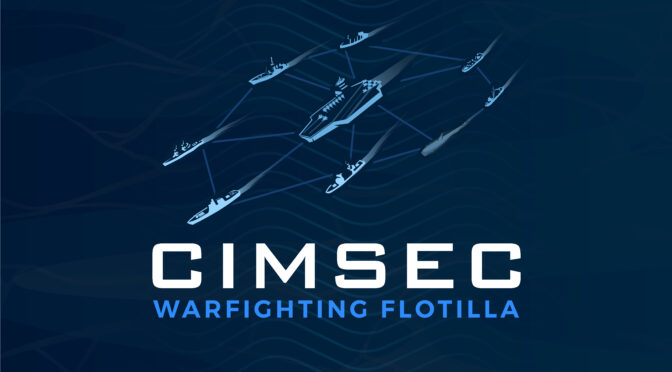By Dmitry Filipoff
In November the CIMSEC Warfighting Flotilla will discuss the implications of fleet-level warfare for the U.S. Navy and the viability of autonomous warships. If you haven’t already, sign up through the form below to become a Flotilla member and receive the invites to our upcoming off-the-record November discussions. The listings for these upcoming discussions are featured down below.
And make sure to check out this week’s special series of Flotilla Tactical Notes to commemorate the 1-year anniversary of our organization!
In October, the Flotilla discussed the state of the Navy’s Information Warfare Community, managing information superiority through TACSIT practices, and revamping professional military education. These candid conversations produced interesting insights on the state and trajectory of the Navy’s force development while promoting connections between the participating navalists and warfighters.
Feel free to visit the Flotilla homepage to learn more about this community, its activities, and what drives it.
Upcoming November Sessions
______________________________________
Mastering Fleet-Level Warfare
As the Navy transitions toward great power competition, it must consider larger-scale operations in the vein of fleet-level warfare. Service leadership has asserted the Navy must focus on fleet-level operations that go beyond the traditional carrier strike group-centric operations of recent decades. What does fleet-level warfare demand of the Navy’s operations and force development? How can the Navy organize to better develop these proficiencies? Join us to discuss these questions and more as we consider fleet-level operations.
Read Ahead: “A Fleet Must be Able to Fight,” by Admiral Scott Swift
______________________________________
Considering Autonomous Warships
Navies are debating the promises and pitfalls of autonomous warships as they consider incorporating unmanned systems into their force structure. The U.S. Navy has already made considerable investments in unmanned systems, which may play critical roles in distributed operations and bolstering the Navy’s overall capacity. What are the merits and drawbacks of autonomous warships? How can they feature in a future fight, and could they prove to be more of a liability than an asset? Join us as we consider the viability of autonomous warships.
Read Aheads: “Feedback Loops and Fundamental Flaws in Autonomous Warships,” by Jonathan Panter and Jonathan Falcone
“Every Warfighter Must Understand Autonomy,” by LtCol Jeff McClean, USAF
____________________________________________
Completed October Sessions
Consolidating Navy Information Warfare
The Navy combined its various information-focused communities into the overarching Information Warfare Community more than a decade ago. The extent to which this reorganization has enhanced the effectiveness of Navy information warfare as a whole and the information communities individually remains open to debate. How has this community construct enhanced the information warfare capability of the Navy? Has the IW community come into its own as a more effective institutional player that can advocate for IW needs? Join us to discuss these questions and more as we consider the state of the Navy’s IW community.
Read Ahead: “The Navy Information Warfare Communities’ Road to Serfdom,” by Capt. Bill Bray (ret.)
____________________________________________
Managing TACSIT for Information Superiority
Forces must deny information to the adversary while securing it for themselves. For the U.S. Navy, the “tactical situation” or TACSIT framework helps operators understand the scope of their situational awareness and that of the adversary’s. How can naval forces better manage information and signatures to reduce their exposure while still securing similar information about an adversary? How can operating practices and force development improve TACSIT awareness and potential? Join us to discuss these questions and more as we consider methods of information superiority in naval warfighting and operations.
Read Ahead: “Living in TACSIT 1,” by CDR Bryan Leese
____________________________________________
Revamping PME
Professional military education serves a critical function in educating warfighters and broadening their understanding. Yet PME must be flexible to meet the demands of changing times, and it must be valued and incentivized by promotion practices. How can the naval services improve PME to enhance the knowledge and understanding of warfighters? How can the services reform PME to be more relevant to great power threats and demands? Join us to discuss these questions as we debate how to improve professional military education.
Read Ahead: “Weaponize PME to Improve the Force,” by Capt. Bobby Holmes, USMC
____________________________________________
Dmitry Filipoff is CIMSEC’s Director of Online Content and Community Manager of the Warfighting Flotilla. Contact him at Content@cimsec.org.

